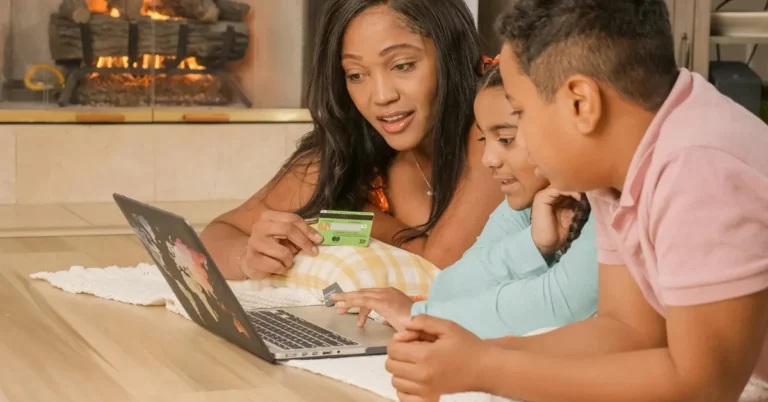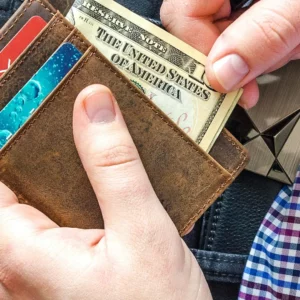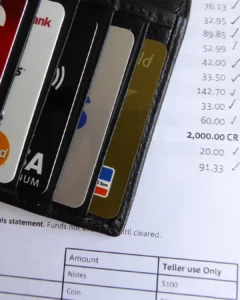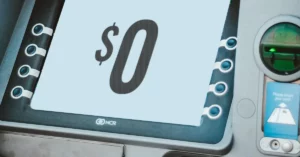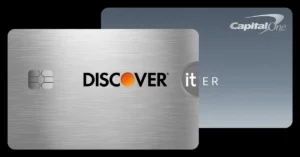A bank account for kids can help teach them about money early in life and is one of the most valuable lessons parents can pass on. Whether you’re helping a child save for a goal, teaching financial responsibility, or simply introducing them to how money works, a kids’ bank account can set them up for future success.
I had a bank account as early as I could remember. It was before the banks went digital and I had a bank register kept in a drawer at home. My parents would take me in to make deposits of a few bucks here and there. The teller would stamp the entry and I (or my parent) would write in the entry and balance. I was able to save up for a bike, a guitar and eventually (when the banks were all computerized) my first semester of college.
I also learned about stocks and investing and as soon as your children start earning enough money, it would be a good idea to start them in some blue chips, funds or other investments that generally have returns much higher than banks. We’ll cover that another time though.
In this guide, we’ll explore when and why kids should have a bank account, how to educate them about money management, and what features to look for in the best bank account for teens and kids.
When Should Kids Get a Bank Account?
There’s no one-size-fits-all answer, but here are a few milestones when opening a bank account for children makes sense:
- Ages 6-9: When they start receiving money for chores, gifts, or allowance.
- Ages 10-12: When they begin to manage their own spending and savings goals.
- Ages 13-15: When they start making small purchases independently or earn their first income from babysitting, yard work, or other gigs.
- Ages 16-18: When they get their first job, need direct deposit, or prepare for more financial independence.
By opening a bank account early, kids learn how to save, spend, and plan their finances in a real-world setting, with guidance from their parents.
How to Teach Kids About Money Through a Bank Account
A kids’ bank account isn’t just a place to store money—it’s a hands-on financial education tool. Here’s how to make the most of it:
1. Start with the Basics
Explain how a bank account for kids works. Kids should understand that:
- The bank keeps their money safe.
- They can deposit money into their account and withdraw it when needed.
- They earn (a little) interest on their savings.
- A debit card isn’t “free money”—it comes from their balance.
2. Teach Them to Track Their Balance
Encourage kids to check their bank balance regularly. Generally, a bank account for kids comes with mobile apps where they can see their balance and transactions. This helps them:
- See how spending affects their savings.
- Learn the value of budgeting.
- Avoid overdrawing their account (if applicable).
3. Set Savings Goals
Help your child set savings goals before they open a bank account for kids. Whether it’s a new game, a bike, or long-term savings, having a target teaches patience and discipline. Some banks even allow kids to set savings categories within their accounts.
4. Let Them Make Small Purchases
Allow kids to experience spending responsibly. Whether they use a debit card or withdraw cash, learning to budget for real purchases teaches important lessons about needs vs. wants.
5. Introduce the Concept of Earning Interest
Explain how interest works—some kids’ accounts offer small interest rates, and seeing their money grow (even by a few cents) can be a great motivator to save.
Should Kids Have a Debit Card?
Many parents wonder if a bank account for teens should include a debit card. The answer depends on the child’s age and responsibility level.
Pros of Giving Kids a Debit Card:
✅ Helps them learn how to spend responsibly. ✅ Allows them to make purchases without carrying cash. ✅ Teaches them how to track spending. ✅ Gives parents oversight through linked accounts.
Cons of Giving Kids a Debit Card:
❌ Could lead to overspending if not monitored. ❌ Fees might apply if the card is overdrawn or used incorrectly. ❌ Might not be necessary for younger kids.
For younger kids, a savings account without a debit card might be best. This type of bank account for kids helps them resist the urge to spend as the money isn’t as easily liquid for them. As they grow, a debit card (with parental controls) can be a great way to teach spending responsibility.
Best Bank Accounts for Kids & Teens in 2025
Many banks and credit unions offer kid-friendly accounts that are linked to a parent’s account, allowing parents to monitor spending and transfer allowances easily.
Here are some of the best options:
1. Chase First Banking (For ages 6-17)
- No monthly fees.
- Parental controls through the Chase app.
- Debit card with customizable spending limits.
2. Capital One MONEY Teen Checking (For ages 8-18)
- No fees, no minimum balance.
- Parental monitoring via app.
- Interest-bearing savings account option.
3. Greenlight Debit Card & Bank Account (For all ages)
- Parent-managed debit card with custom spending categories.
- Savings goals and allowance automation.
- Costs $4.99/month but includes family-friendly features.
4. Alliant Credit Union Kids Savings Account (For all ages)
- Higher interest rate compared to traditional banks.
- Parent-controlled joint account.
- No monthly fees.
5. Fidelity Youth Account (For teens 13+)
- No fees, investing options available.
- Parental access but teen-managed.
- Debit card and mobile banking included.
6. Local Credit Unions
Many local credit unions offer bank accounts for teenagers with benefits like:
- No fees for students.
- Free ATM access.
- Local support and community-based incentives.
You’ll have to shop around or ask your own bank (since it may be a hassle to switch) for details. there are also several online banks that cater specifically to child bank accounts and make it easy to connect to your primary account.
How Parents Can Help Kids Manage Their Bank Account
Opening a bank account for kids is just the first step—helping them manage it wisely is where the real learning happens. Here’s how parents can guide their kids:
✔ Transfer Allowance Digitally – Many accounts let parents set up automatic transfers, mimicking a paycheck system. ✔ Review Statements Together – Go over transactions each month to discuss good and bad spending habits. ✔ Teach Safe Online Banking – Ensure they understand security basics like never sharing passwords. ✔ Encourage Budgeting – Have them divide money into categories like spending, saving, and giving. ✔ Introduce Investing (for Teens) – Some accounts offer the ability to buy small amounts of stocks, teaching long-term financial growth.
Final Thoughts: Setting Kids Up for Financial Success
Opening a bank account for kids is a simple but powerful way to teach financial literacy. The earlier kids learn about banking, saving, and responsible spending, the better prepared they’ll be for adulthood. By choosing the right account, offering guidance, and gradually increasing financial responsibility, parents can help kids build healthy money habits that last a lifetime.
Whether your child is six or sixteen, now is the perfect time to start their financial journey. Find the best account for your family and begin teaching them the skills they’ll need for the future!
